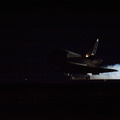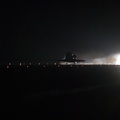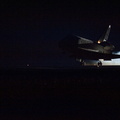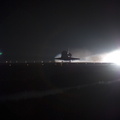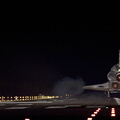
WIKIARCHIVES.SPACE
The Human Spaceflight Archive

The lunar highlands exhibit rhythmic patterns thought to result from slow, downslope creep of the loose regolith (soil). These subtle patterns are most easily seen when the Sun is low to the horizon. Image is 2400 meters wide, north is to the top.
Information
- Taken in
- Author
- NASA/GSFC/Arizona State University
- Description
-
The lunar highlands exhibit rhythmic patterns thought to result from slow, downslope creep of the loose regolith (soil). These subtle patterns are most easily seen when the Sun is low to the horizon. Image is 2400 meters wide, north is to the top.
Malapert mountain is very ancient, and thus has well-developed regolith (soil). Malapert is always seen at low Sun due to its latitude (86° South) near the south pole, giving this texture its striking appearance.
NASA's Goddard Space Flight Center built and manages the mission for the Exploration Systems Mission Directorate at NASA Headquarters in Washington. The Lunar Reconnaissance Orbiter Camera was designed to acquire data for landing site certification and to conduct polar illumination studies and global mapping. Operated by Arizona State University, the LROC facility is part of the School of Earth and Space Exploration (SESE). LROC consists of a pair of narrow-angle cameras (NAC) and a single wide-angle camera (WAC). The mission is expected to return over 70 terabytes of image data.
- Created on
- Monday 22 February 2010
- Albums
- US SPACE PROGRAM / PROBES / MOON / LRO/LCROSS / Mission Photos (Edited)
- Source link
- https://photojournal.jpl.nasa.gov
- Visits
- 13
- Rating score
- no rate
- Rate this photo
- License
- Public Domain
- Modified by WikiArchives
- No (original)
- Downloads
- 1
Powered by Piwigo



